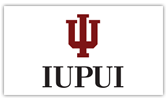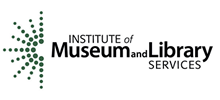Resources
Readings
Diamond, Judy (1999) Practical Evaluation Guide: Tools for Museums and Other Informal Educational Settings. Walnut Creek: Alta Mira Press.
Includes data collections strategies for assessing museum learning. In addition, the guide provides clear instructions, tools, and approaches for understanding how well programs and exhibits communicate their main messages to museum audiences.
Durrance, Joan C. and Karen E. Fisher-Pettigrew (2004). Outcome toolkit version 2.0, [website of Information Behavior in Everyday Contexts]. Retrieved August 18, 2005, from http://ibec.ischool.washington.edu/
This toolkit is a simple, flexible effective methodology for evaluating outcomes, targeting libraries and community-focused services. It includes worksheets and examples, and the method is in the process of being piloted by a group of public libraries from large to small for a variety of typical library programs.
Hernon, P. & Dugan, R.E. (2002). Action plan for outcomes assessment in your library. Chicago, IL, American Library Association.
The book provides data collection tools for measuring learning and research outcomes linking outcomes to user satisfaction, as well as case studies from actual outcomes assessment programs in libraries.
LibQUAL survey of library-user satisfaction, see http://www.libqual.org
A source for standardized surveys that can serve as models or can be budgeted as part of your evaluation plan.
National Survey of Student Engagement, see http://nsse.iub.edu/index.cfm
A source for standardized surveys that can serve as models or can be budgeted as part of your evaluation plan.
Nichols, Susan K., compiler. (1999). Visitor surveys: a user's manual. Washington, D.C.: American Association of Museums, Technical Information Service.
Part of the AAM Professional Practice Series, this guide provides a step by step guide to survey development by Randi Korn and Laurie Sowd along with reprints of selected readings about museum evaluation.
Schecter, E.I. (2005). Internet resources for higher education outcomes assessment, [webpage of North Carolina State University]. Retrieved August 9, 2005, from http://www2.acs.ncsu.edu/UPA/assmt/resource.htm
Schecter has compiled this metasite with information on assessment in higher education programs. Major subdivisions include discussion lists, forums, archives, articles, and lists of links. Much of the assessment information can be applied to other programs and institution types.
StatSoft, Inc. (2005). The electronic statistics textbook. Retrieved August 12, 2005, from http://www.statsoft.com/textbook/stathome.html
This online guide to statistics contains a glossary, interactive “Statistical Advisor,” distribution tables, and elementary concepts to help explain targets, percentages, and measurement in evaluation. Although much of the material is highly advanced, the layperson will likely find some of the information useful.
W.K. Kellogg Foundation. (2005). Evaluation overview. Retrieved August 12, 2005, from http://www.wkkf.org/default.aspx?tabid=75&CID=281&NID=61&LanguageID=0
The W.K. Kellogg Foundation is a 75-year old philanthropic organization. This website provides evaluation approaches, questions, plan, budgeting, and management tools to communicate crucial information to stakeholders and program audiences. It is an overview of how to develop and capture information within an organization.
Organizations
American Evaluation Association http://www.eval.org/
The American Evaluation Association is an international professional association of evaluators devoted to the application and exploration of program evaluation, personnel evaluation, technology, and many other forms of evaluation. Topic Interest Groups (TIGs) include evaluation of arts and culture, and non-profits.
Association of Science and Technology Centers http://www.astc.org/resource/visitors/index.htm
The ASTC web site maintains a section on visitor studies including readings, abstracts of recent studies, and listing of ASTC evaluation publications.
Committee on Audience Research and Evaluation (CARE). http://www.care-aam.org/
A Standing Professional Committee of the American Association of Museums (AAM), CARE’s website contains information for those interested in audience research and evaluation in museums, zoos, aquariums, historic sites, and other visitor institutions. The site has publications, presentations from “Visitor Studies 101” sessions at AAM, professional standards guidelines, and links to evaluation resources.
University of Wisconsin-Extension Cooperative. http://www.uwex.edu/ces/pdande/index.html
A site of the Program Development and Evaluation Unit of UW-Extension with a wealth of evaluation materials and resources. Included is their list of evaluation publications, “Quick Tips” (such as “The Basics of Good Evaluation Reporting”), and program development materials.
Visitor Studies Association.
http://www.visitorstudies.org/
International organization devoted to enhancing and understanding visitor experiences in museums, zoos, nature centers, visitor centers, historic sites, parks, and other informal learning settings.




